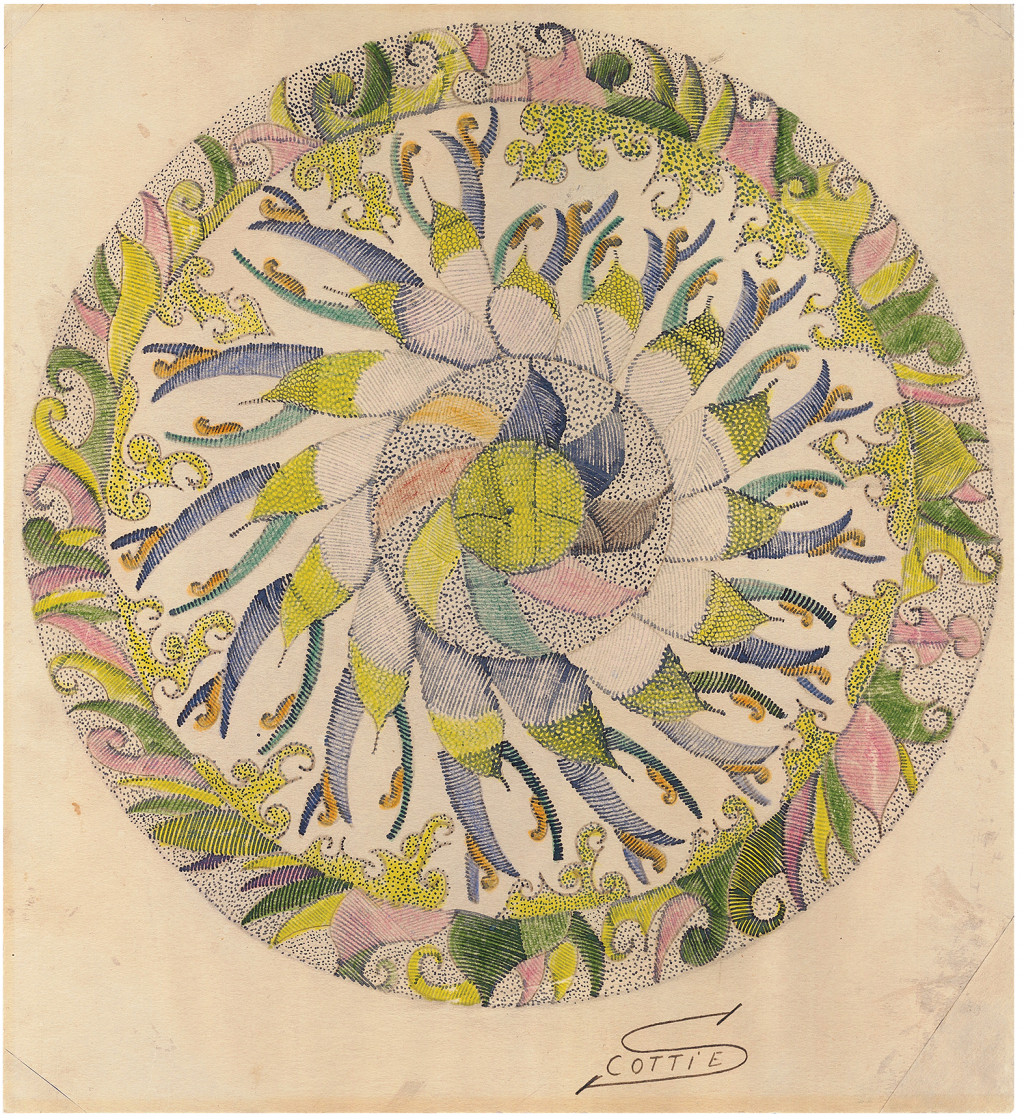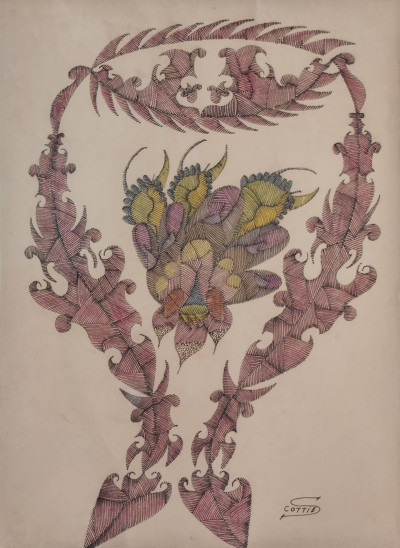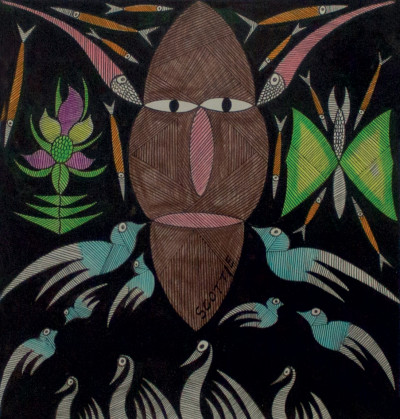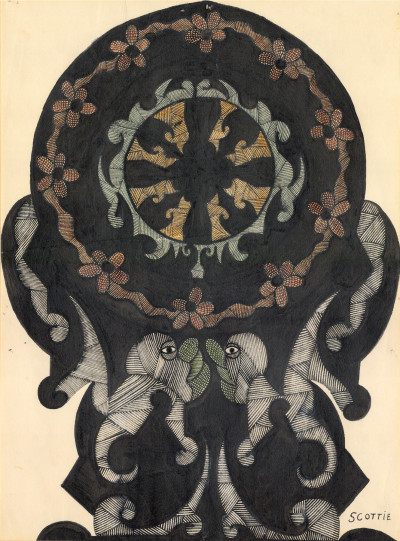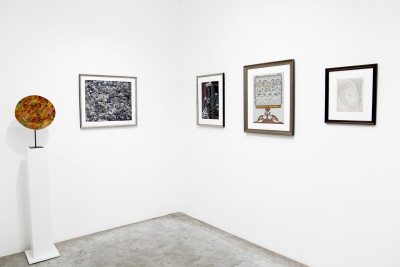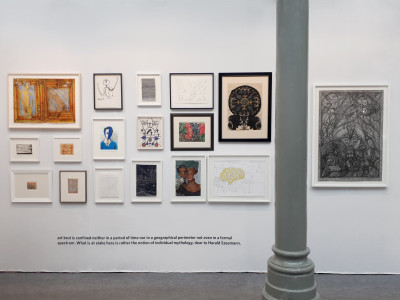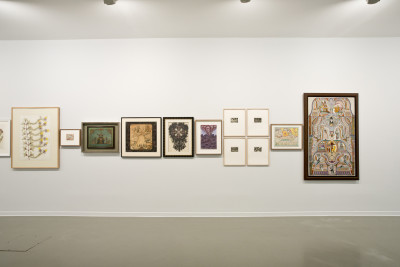Scottie Wilson
Collected by Picasso, André Breton, and Jean Dubuffet, Scottie Wilson is a major artist of the 20th century. His works, born from a multiplication of finely applied lines, fascinated his contemporaries, who were eager to exhibit, sell, or even publish them at all costs.
Born in Glasgow in 1888, Scottie was part of a family of five children. At a young age, he had an affection for trees and animals (especially birds) and frequently visited the zoo and circus. Illiterate, at the age of 10, he sold newspapers, and at 16, he enlisted in the army, serving in India and South Africa. Upon returning to London, he lived by working in a kind of mobile shop before immigrating to Canada in 1928, where he opened a resale shop. At the age of 40, Scottie Wilson started collecting fountain pens; it was with one of them, nicknamed “Bulldog,” that one day, in a moment of boredom, he made his first drawing.
From then on, his creative activity continued to grow. The initially unsettling and dark early drawings gradually gave way to a joyful, colorful, and serene universe: “The most intriguing and fascinating,” in the words of Dubuffet himself. His creations depicted specters, trees, totems, castles, fountains, and animals. However, all this flora and fauna, “too beautiful for the earth” according to Scottie, only appeared to the artist once the drawing was finished: “When he wants to make a drawing, he doesn’t start in the middle of the sheet, but in a corner, and he doesn’t know what will happen until, little by little, as he looks, he realizes that he has finally filled the entire surface of the sheet.” (Mr. Andrew De Maine).
Upon returning to London after World War II, his drawings were displayed in exhibitions he organized himself in unusual venues. When galleries managed to exhibit his works, Scottie simultaneously sold his drawings in the streets at a ridiculously low price, much to the dismay of art dealers.
Today, Scottie Wilson’s artwork is exhibited in numerous museums around the world, notably at LaM (France), Faculdade de Bellas Artes da Universidade de Porto (Portugal), The Whitworth (England), and Kunsthal (Netherlands).
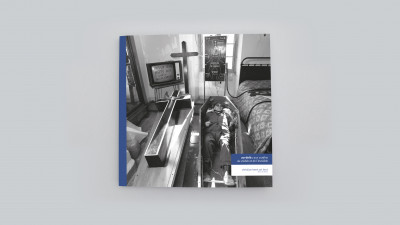
Preface : Philippe Baudouin
Foreword : Christian Berst.
Catalog published to mark the exhibition Beyond : on the edge of the visible and the invisible, from March 6th to April 13th, 2019.
